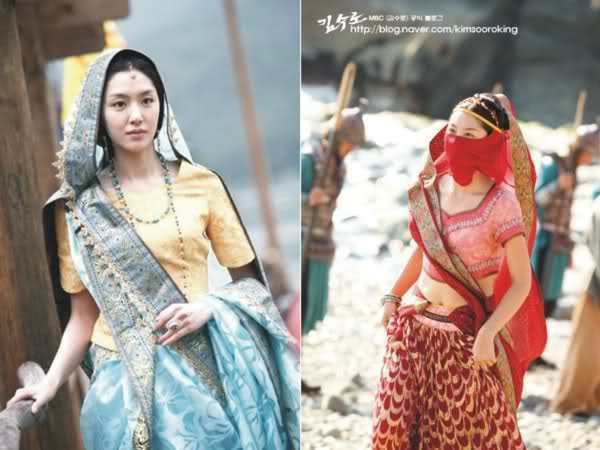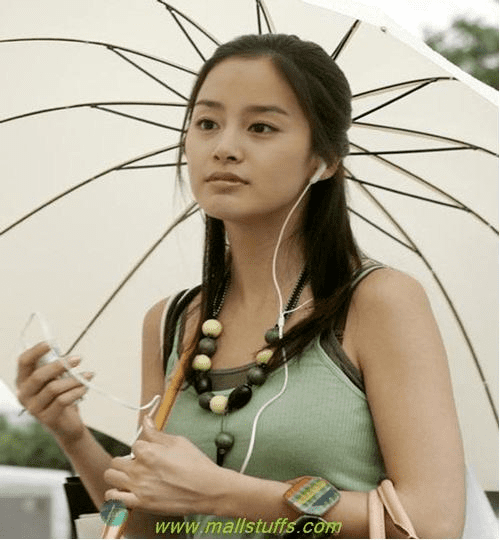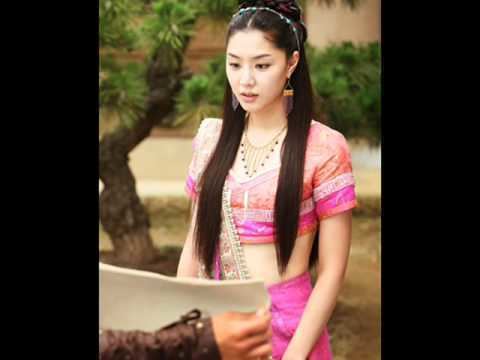 | ||
Role Suro of Geumgwan Gaya's wife People also search for Suro of Geumgwan Gaya, Geodeung of Geumgwan Gaya, Jeonggyeon Moju, Lee Biga | ||
Children Geodeung of Geumgwan Gaya | ||
Heo Hwang Ok (허황옥)
Heo Hwang-ok is a legendary queen mentioned in Samguk Yusa, a 13th-century Korean chronicle. She was the wife of King Suro of Geumgwan Gaya. The legend states that she arrived on a boat from a distant kingdom, and married the king in the year 48 CE. She was the first queen of Geumgwan Gaya.
Contents
- Heo Hwang Ok
- Origins
- Marriage to Suro
- Descendants
- Remains
- Memorial in Ayodhya
- In popular culture
- References

Origins

The legend of Heo is found in Garakgukgi (the Record of Garak Kingdom) which is currently lost, but referenced within the Samguk Yusa. According to the legend, Heo was a princess of the Ayuta kingdom. The extant records do not identify Ayuta except as a distant country. In the 20th century, Kim Byung-Mo, an anthropologist from the Hanyang University, identified Ayuta with Ayodhya in India based on phonetic similarity. Historians consider this as a myth, and there are no records of this legend in the Indian history. Grafton K. Mintz and Ha Tae-Hung implied that the Korean reference was actually to the Thailand's Ayuhatta. However, according to George Cœdès, the Thai city was not founded until 1350 CE, after the composition of Samguk Yusa.
Marriage to Suro

After their marriage, Heo told Suro that she was 16 years old. She stated her given name as "Hwang-ok" ("Yellow Jade") and her family name as "Heo" (or "Hurh"). She described how she landed up in Gaya as follows: The Heavenly Lord (Sange Je) appeared in her parents's dreams. He told them to send Heo to Suro, who had been chosen as the king of Gaya. The dream showed that the king had not yet found a queen. Heo's father then told her to go to Suro. After two months of a sea journey, she found Beondo, a peach which fruited only every 3000 years.
According to the legend, the courtiers of King Suro had requested him to select a wife from among the maidens they would bring to the court. However, Suro stated that his selection of a wife will be commanded by the Heavens. He commanded Yuch'ŏn-gan to take a horse and a boat to Mangsan-do, an island to the south of the capital. At Mangsan, Yuch'ŏn saw a vessel with a red sail and a red flag. He sailed to the vessel, and escorted it to the shores of Kaya (or Gaya, present-day Kimhae/Gimhae). Another officer, Sin'gwigan went to the palace, and informed the King of the vessel's arrival. The King sent nine clan chiefs, asking them to escort the ship's passengers to the royal palace.
Princess Heo stated that she wouldn't accompany the strangers. Accordingly, the King ordered a tent to be pitched on the slopes of a hill near the palace. The princess then arrived at the tent with her courtiers and slaves. The courtiers included Sin Po (or Sin Bo 신보 申輔) and Cho Kuang (or Jo Gwang 조광 趙匡). Their wives were Mojong 모정(慕貞) and Moryang 모량(慕良) respectively. The twenty slaves carried gold, silver, jewels, silk brocade and tableware. Before marrying the king, the princess took off her silk trousers (mentioned as a skirt in a different section of Samguk Yusa) and offered them to the mountain spirit. King Suro tells her that he also knew about Heo's arrival in advance, and therefore, did not marry the maidens recommended by his courtiers.
When some of the Queen's escorts decided to return home, King Suro gave each of them thirty rolls of hempen cloth (one roll was of 40 yards). He also gave each person ten bags of rice for the return voyage. A part of the Queen's original convoy, including the two courtiers and their wives, stayed back with her. The queen was given a residence in the inner palace, while the two courtiers and their wives were given separate residences. The rest of her convoy were given a guest house of twenty rooms.
Descendants
Heo and Suro had 12 children, the eldest son was Geodeung. She requested Suro to let two of the children bear her maiden surname.Legendary genealogical records trace the origins of the Gimhae Heo to these two children. The Gimhae Kims trace their origin to the other eight sons. According to the Jilburam, the remaining seven sons are said to have followed their maternal uncle Po-Ok's footsteps and devoted themselves to Buddhist meditation. They were named Hyejin, Gakcho, Jigam, Deonggyeon, Dumu, Jeongheong and Gyejang. Overall, more than six million Koreans trace their lineage to Queen Heo. The other two were female and were married respectively to a son of Talhae and a noble of Silla.
The legend states that the queen died at the age of 157.
Remains
The tombs believed to be that of Heo and Suro lie are located in Gimhae, South Korea. A pagoda traditionally held to have been brought to Korea on her ship is located near her grave. The Samguk Yusa reports that the pagoda was erected on her ship in order to calm the god of the ocean and allow the ship to pass. The unusual and rough form of this pagoda, unlike any other in Korea, may lend some credence to the account.
The Samguk Yusa also records that a temple was built in honor of Heo and her husband by King Jilji in 452. The temple was called Wanghusa, or "the Queen's temple." Since there is no other record of Buddhism having been adopted in 5th-century Gaya, modern scholars have interpreted this as an ancestral shrine rather than a Buddhist temple.
Memorial in Ayodhya
Based on identification of Ayuta with Ayodhya in India, several Koreans believe Heo Hwang-ok to be an Indian princess. In 2001, a Memorial of Heo Hwang-ok was inaugurated by a Korean delegation, which included over a hundred historians and government representatives. In 2016, a Korean delegation proposed to develop the memorial. The proposal was accepted by the Uttar Pradesh chief minister Akhilesh Yadav.
